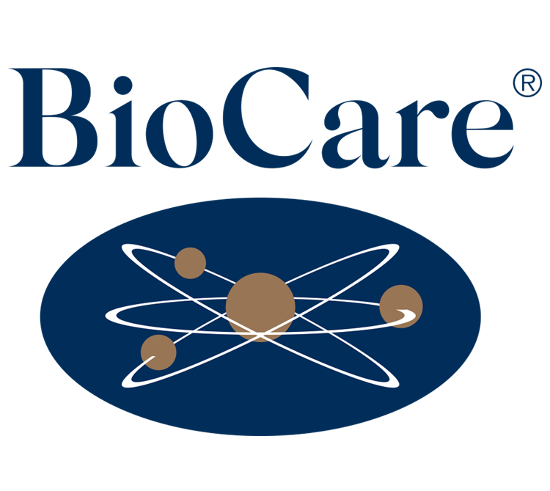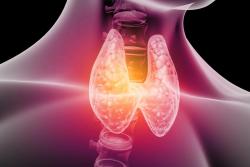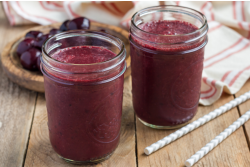More than 2000 years ago, Hippocrates said “all disease begins in the gut.”[i] But only now are we beginning to understand how the gastrointestinal system mediates many functions and is therefore central to health and disease. Apart from the ever-increasing incidence of digestive disorders, an unhealthy gut and an imbalance in gut bacteria can contribute to a wide range of diseases, including heart disease.
How are our gut bacteria relevant to heart health? People with reduced microbial diversity in the gut are at a higher risk of cardiovascular disease (CVD).[ii] A recent study showed that heart failure patients who eat more fibre have healthier balance of gut bacteria, which has been linked to reduced risk of death and need for a heart transplant.[iii]
So it’s clear that one of the most natural ways to support heart health includes optimising our gut bacteria through diet and using the right probiotics that have been researched for their heart health-promoting properties.
Probiotics and Heart Health - Cholesterol Metabolism
We have all heard of cholesterol, and how ‘bad’ it is for our heart health, but let’s get some facts straight. Did you know that cholesterol naturally exists in our blood and is vital for our health? It works to nourish our cell membranes and supports the production of steroid hormones (e.g. stress and sex hormones), CoQ10 and vitamin D?[iv]
So, if cholesterol is so important, then what’s all the fuss about it? Cholesterol becomes harmful when it becomes oxidised (reacts with oxygen) and contributes to atherosclerosis (the build-up of plaque within the arteries). Therefore, keeping a fine-tuned balance of cholesterol levels is necessary. Often high cholesterol levels can accompany other symptoms that encourage CVD and together they may increase the risk of stroke or heart attack. Risk factors for disrupted cholesterol levels and oxidation include having a diet too high in sugar, refined carbohydrates and trans-fats, toxic exposure such as smoking,[v] inflammation, low levels of physical activity and obesity.[vi]
Cholesterol levels are regulated via the gut and liver. The liver secretes excess cholesterol into bile or converts it to bile salts. Then about 90% is reabsorbed in the gut and recirculated to the liver. Normally only about 5% is eliminated via the gut in our stools. These are key ways in which cholesterol levels are managed.[vii]
A natural way to support excess cholesterol is by increasing the amount eliminated through the stools, thereby reducing its recirculation. Since cholesterol is vital at balanced levels for energy and cognitive function, blocking production altogether would not be conducive to health, as with the action of statins.[viii]
The bacterial strain Lactobacillus plantarum,[ix] as well as the LAB4 blend[x] containing four strains of bacteria, have been found to support this process, encouraging more cholesterol elimination through the bowel, lowering levels of cholesterol entering the bloodstream and potentially reducing the risk of heart disease.
One study has shown that the Lactobacillus plantarum strain significantly reduced total cholesterol levels over a 12 week period. Interestingly, it also had a positive impact on the uptake of cholesterol from the bloodstream into the cells, as well as reducing cholesterol damage.[xi] In this way, it acts in a truly supportive manner to achieve balance and improve cardiovascular function, without excessively reducing cholesterol levels.
Halting the progression of Atherosclerosis with probiotics
Atherosclerosis is a build-up of plaque within the arteries. It is commonly the cause of most types of cardiovascular dysfunction, including hypertension, stroke, deep vein thrombosis, high blood pressure, angina, congestive heart failure, and heart attack, amongst others.[xii] The plaque is made up of a mixture of fats, white blood cells, proteins, and cellular waste. Too much of these floating around in the blood leads to the thickening and hardening of arterial walls, decreasing the diameter of the vessels, hence decreasing effective blood flow.[xiii]
A big driver of atherosclerosis is inflammation. C-reactive protein (CRP), is a marker for inflammation that may raise the risk for atherosclerosis and heart disease. Furthermore, damage to the arteries' inner walls, caused by toxins, free radicals, high homocysteine, amongst other factors, seems to trigger inflammation and help plaque grow even further, creating a vicious cycle.[xiv]
One of the ways this inflammation can be managed is through our gut microflora by increasing the balance of beneficial bacteria (reducing dysbiosis), we can keep in check pathogenic bacteria, yeasts and parasites.
Two of the most prevalent families of bacteria in the gut include Lactobacilli and Bifidobacterium, which produce lactic acid to be able to maintain a balance of beneficial microflora. This balance helps to reduce the production of inflammatory molecules and improve immune function. Additionally, intestinal permeability could allow viruses, bacteria, toxins and substances produced from the breakdown of microbes (e.g. lipopolysaccharides - LPS)[xv] to enter the blood stream and cause a reaction.
The immune system reacts by activating inflammatory molecules, often resulting in whole body inflammation. Circulating toxins such as LPS, may be the link between gut bacteria and chronic low-grade inflammation induced by a high-fat diet, then leading to insulin resistance. It is through this mechanism that CVD can be instigated.[xvi] Both LAB4 probiotics[xvii] and the L. plantarum[xviii] strain have also shown to improve gut integrity, reducing endotoxemia and increasing anti-inflammatory cytokines.[xix] This could help to prevent intestinal permeability, hence reducing overall inflammation and heart disease.
Homocysteine and Heart Health
Homocysteine is a molecule that naturally occurs in the body, however, when in excess it is associated with atherosclerosis and the risk of stroke.[xx] Homocysteine is considered an independent risk marker for heart health and levels can be measured with a simple blood test through your GP or Nutritional Therapist.
Some key nutrients necessary for CV health are also produced by gut bacteria, for example, B6, folate and B12.[xxi] These nutrients are crucial to optimise methylation, one of our key detoxification pathways, to prevent excess homocysteine production. We rely on certain gut microbes to make these vitamins in abundance to keep multiple cellular processes occurring including methylation.
Why you should consider probiotics for your heart health
Cardiovascular disease has a complex and multifactorial set of preceding factors. Cardiovascular health is fundamentally connected to many key maladaptations (such as poor glucose regulation, inflammation, stress and high toxic load). These underpin other chronic diseases such as diabetes, dementia, cancer and others. However, much research is now focused around how pivotal our microbial balance is to our wellbeing and the overarching effect it can have to good health. Probiotics are a safe and simple way to replenish and rebalance microbial dysbiosis and lower gut and systemic inflammation. Therefore, improvements can be made by probiotics not only to heart health, but to the wider system, enhancing quality of life and improving longevity.
Got a question?
The brand you can talk to:
We have a team of Nutritionists at the end of our advice line, open to you, for product support and advice (5 days a week). 0121 433 8702, clinicalnutrition@biocare.co.uk or live chat with us.
Or head to our advice page where you can find Healthnotes.
Not registered for an account with BioCare®?
You can register now to receive up to date news, product information and exclusive offers whether you are a consumer, practitioner or retailer.
References
[i] Louisa Lyon. ‘All disease begins in the gut’: was Hippocrates right? Brain. 2018;141(3):Page e20
[ii] Tang WH, Kitai T, Hazen SL.Gut Microbiota in Cardiovascular Health and Disease. Gut Microbiota in Cardiovascular Health and Disease. 2017:120(7).
[iii] Mayerhofer C et al. Design of the GutHeart-targeting gut microbiota to treat heart failure-trial: a Phase II, randomized clinical trial. ESC Heart Failure, 2018; 5 (5): 977
[iv] Chowdhury R, et al. Association of Dietary, Circulating, and Supplement Fatty Acids with Coronary Risk: A Systematic Review and Meta-analysis. Ann Intern Med. 2014; 160(6):398-406.
[v] Michael Pittilo R. Cigarette smoking, endothelial injury and cardiovascular disease. International Journal of Experimental Pathology. 2000; 81(4):219-230.
[vi] Castelli. Lipids, risk factors and ischaemic heart disease. Atherosclerosis 1996:124 suppl S1-9
[vii] Zhou H et al. Cholesteryl ester transfer protein (CETP) expression enhances HDL cholesteryl ester liver delivery, which is independent of scavenger receptor BI, LDL receptor related protein and possibly LDL receptor.
Biochim Biophys Acta. 2006; 1761(12):1482-8.
[viii] O’Keeffe AG, Nazareth I, Petersen I. Time trends in the prescription of statins for the primary prevention of cardiovascular disease in the United Kingdom: a cohort study using The Health Improvement Network primary care data. Clinical Epidemiology. 2016; 8:123-132.
[ix] Bukowska et al. Decrease in fibrinogen and LDL-cholesterol levels upon supplementation of diet with Lactobacillus plantarum in subjects with moderately elevated cholesterol. Atherosclerosis. 1998; 137 (2): 437-8.
[x] Michael DR et al. The anti-cholesterolaemic effect of a consortium of probiotics: An acute study in C57BL/6J mice. Scientific Reports. 2017;7:2883.
[xi] Fuentes MC et al. Cholesterol-lowering efficacy of Lactobacillus plantarum CECT 7527, 7528 and 7529 in hypercholesterolaemic adults. Br J Nutr. 2013l 109 (10): 1866-72
[xii] Frostegård J. Immunity, atherosclerosis and cardiovascular disease. BMC Medicine. 2013; 11:117.
[xiii] Hansson GK, Libby P. The immune response in atherosclerosis: a double-edged sword. Nature Reviews Immunology. 2006; 6: 508–519.
[xiv] Guyenet SJ, Schwartz MW. Regulation of Food Intake, Energy Balance, and Body Fat Mass: Implications for the Pathogenesis and Treatment of Obesity. The Journal of Clinical Endocrinology and Metabolism. 2012; 97(3):745-755.
[xv] Guo S et al. Lipopolysaccharide regulation of intestinal tight junction permeability is mediated by TLR4 signal transduction pathway activation of FAK and MyD88. J Immunol. 2015; 195(10):4999-5010.
[xvi] Fasano A. Zonulin and its regulation of intestinal barrier function: the biological door to inflammation, autoimmunity, and cancer. Physiol Rev. 2011; 91(1):151-75.
[xvii] Roberts, J.D, et al. An Exploratory Investigation of Endotoxin Levels in Novice Long Distance Triathletes, and the Effects of a Multi-Strain Probiotic/Prebiotic, Antioxidant Intevention. Nutrients, 2016;
[xviii] Fuentes MC et al. Cholesterol-lowering efficacy of Lactobacillus plantarum CECT 7527, 7528 and 7529 in hypercholesterolaemic adults. Br J Nutr. 2013; 109 (10): 1866-1872
[xix] Hepburn NJ et al. Probiotic supplement consumption alters cytokine production from peripheral blood mononuclear cells: a preliminary study using healthy individuals. Beneficial Microbes.2013;4(4):313-17.
[xx] Ganguly P and Alam SF. Role of homocysteine in the development of cardiovascular disease. Nutr J. 2015; 14:6
[xxi] Miller JW et al. Metabolic evidence of vitamin B-12 deficiency, including high homocysteine and methylmalonic acid and low holotranscobalamin, is more pronounced in older adults with elevated plasma folate. Am J Clin Nutr. 2009; 90 (6): 1586-92.





